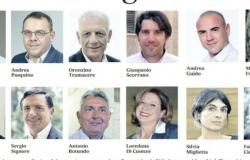Pesaro, 13 June 2024 – In “The Last Image” by James Hillman written with Silvia Ronchey, the author focuses on the nature of images. He tells us that the power of the image is to create experience. A work of art, therefore, is such when it has the power to arouse in us an experience that is not necessarily linked to the traditional sense of beauty.
Marina Abramović’s virtual performance, produced by Tin Drum and directed by Todd Eckert, hosted in the spaces of the Centro Arti Visive della Pescheria di Pesaro, has this power. You initially enter a museum space: photographs and videos serve to explain the work that the visitor will soon be led to experience. The preparation of the digital body which will be the true protagonist of the work of art is illustrated in detail. In the video it is expressly said that the virtual narration has the aim of stopping the image within the flow of time and making it immortal. In fact, in a classic body art performance, the work exists for the duration of the action, lives in the here and now, and remains in the collective memory through photographs and videos.
Here, however, the work consists of a projection of Abramović’s hologram, dressed in red, which moves in a digital space where the visitor is also led to enter through particular viewers. The space of the work therefore becomes, for the time of the performance, also the space of the public who follows this body moving, dematerializing and then materializing again, in a dimension of absence and presence.
Marina’s slow movements have the flavor of ancient icons, they force the observer to stay there, to watch the image that moves inside a real black circle and, at the same time, inside a virtual circle of light. The artist’s digital body exits and enters, crosses the limit, and every time she exits she becomes a shadow inside the circle of light, in an infinite game. The image has no depth, it is the shadow that the human being is, and becomes the symbol of a spiritual body, that of each of us, which seeks its own meaning beyond mere appearance. It is here that we see the invisible image within the visible one: as in front of the red squares that the artist had previously invited us to observe, we lose our gaze inside the red of her dress; within the wounds of her soul, we find our own, poised on the edge of a middle world where active imagination, Jung would say, takes over.
We are pieces of the world grown inside a name. If we leave the name, inside our shadow, we find the world again. And ourselves.
*History of architecture
and contemporary art





